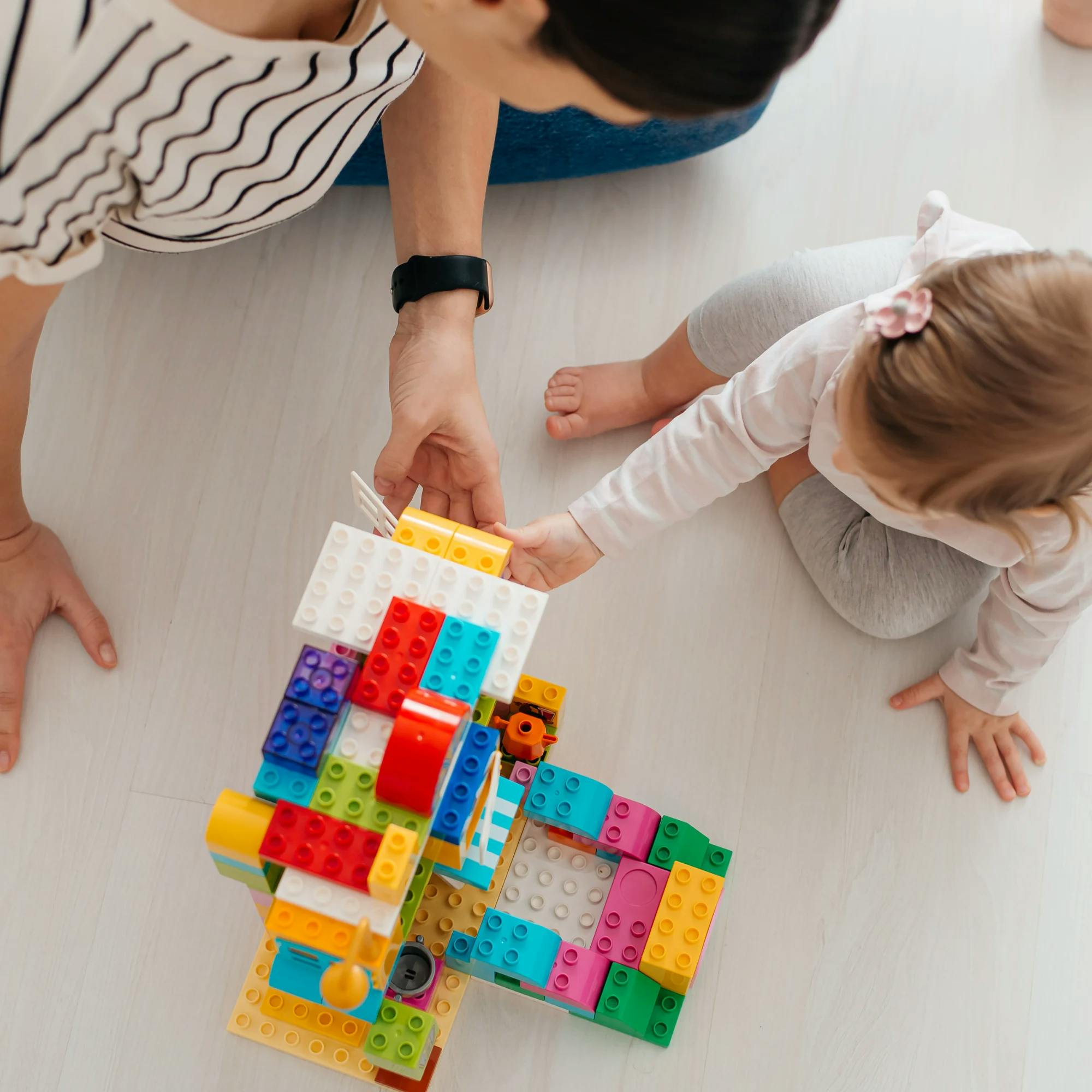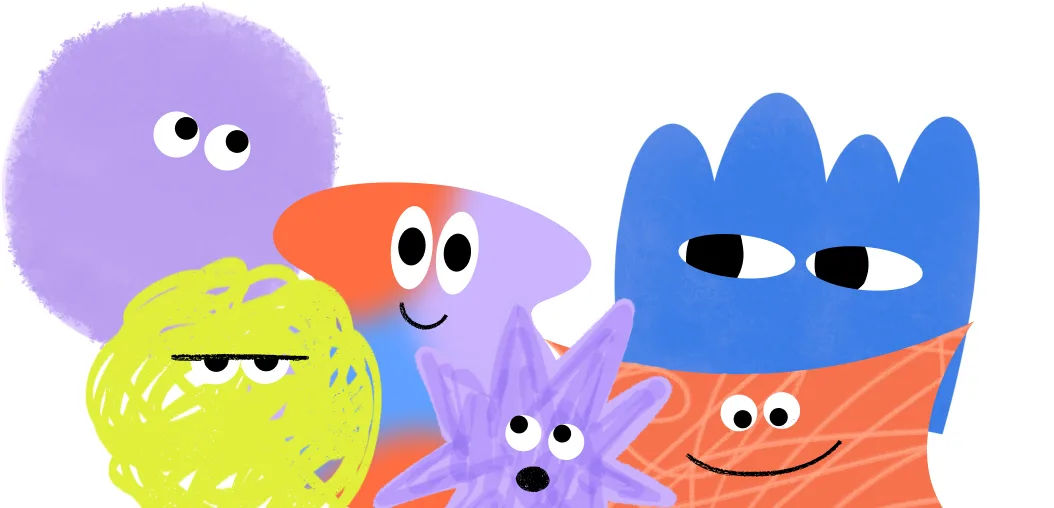
How to Help Your Child Use Gestures and Signs to Communicate
 Abby Barnes, M.S., CCC-SLP
Abby Barnes, M.S., CCC-SLP
When your child isn’t yet able to talk, it can be tough trying to figure out what they need. We’ve all had those moments where a child fusses or bursts into tears for seemingly no reason. If only they could just tell us what they want!
Many parents and caregivers find themselves living with this mystery until their baby is able to talk. Here's the good news: You can help your child communicate much sooner, even before they've said their first word!
This article explains how to interpret your child’s nonverbal language. You’ll also learn how to help them communicate through baby sign language and gestures. Teaching signs to your child is easy, and many kiddos catch on quickly. Fewer tears and less frustration for all!
Communication isn’t just talking
Let’s start with the basics: defining communication. Communication is made up of so much more than the words we say. It also includes nonverbal communication. These are things such as body language, facial expressions, pointing, and using gestures and signs.
In young children, there is an entire world of nonverbal communication development that happens long before those special first words. Think about it:
The first smile your baby gives you
Your toddler pointing toward something they want
The scrunched-up face they make when trying a new food
Using hand signs for words like “eat,” “drink,” or “go”
All of this is nonverbal communication!
Is your child on track?
Take our free screener to learn more about your child's development and whether a speech evaluation is recommended.
 Screener for children
Screener for childrenHow to read your child’s nonverbal language
You can generally tell what your child is trying to communicate–and how they’re feeling–based on their nonverbal cues. When you pay attention to those cues, it gives you a peek inside your child’s thoughts. It also increases the bond you share with your baby and can make you more responsive to their needs. Here’s how to do it:
1. Watch your child’s facial expressions. Do they seem happy or sad? Curious, tired, frustrated?
2. Then, take a moment to look around. Is there something out of reach that your baby is eyeing and trying to get? Is there a toy you just showed them that made them giggle?
3. Finally, think about their day so far. Is it close to mealtime or bedtime? Are they hungry? Did they miss their nap? All of those factors can lead to big feelings in little kids.
By observing your child’s nonverbal language, you can often find clues as to why they’re feeling the way they are. Of course, no matter how “in tune” you are with your baby, there will be times when you can’t figure out what they’re trying to tell you. But by using these tips, you should have some idea what’s going on in their head!


What is baby sign language?
Baby signing is a collection of simple gestures that help children communicate their needs nonverbally, or without using words. These signs are a modification of American Sign Language (ASL), but they have been simplified and adapted for use by babies and toddlers. While they are not considered true ASL, and therefore don’t include the rules and grammar of ASL, they are easy to make and can help children express their needs before they say their first words.
You can even create your own gestures with the goal of making it easier for your little one to communicate. The goal isn’t to be perfect or become fluent in ASL, but to help children better express themselves through gestures while also learning the associated words.
When should I start teaching my baby signs?
You can start teaching signs immediately with your newborn. However, most children won’t be able to begin using signs independently until at least 6 months of age.
Don’t forget: You may already be using simple gestures throughout the day. It’s hard to sing “Itsy Bitsy Spider” without doing the gestures, right? The same concept applies to teaching baby signs. Many of these signs will feel completely natural. In fact, you probably already have a sign for “all done,” which is definitely preferable to throwing food on the floor. And many babies instinctively seem to know how to tell us "no" with a shake of their head!

Can teaching baby signs cause a speech delay?
Before we talk about how to teach baby signs, let’s get one thing out of the way: Teaching baby sign language does not cause a delay in speech and language development. This is a misconception I commonly hear from caregivers. They raise the concern, understandably, that if a baby can use simple gestures, won’t they be less motivated to learn words?
That’s not the case, and it’s not rooted in fact or research. Signs simply allow children to more easily express themselves when the words aren’t yet available. If anything, teaching a baby sign language along with words helps promote language growth.
Teaching a baby sign language along with words helps promote language growth.
Research has shown that a baby’s ability to use gestures is one of the stronger predictors of later language success. Studies also show that children who produce more gestures early on will develop larger expressive vocabularies as they age. One landmark study showed that children who first produced a gesture and word combination were more quickly able to combine words together to create short phrases. That’s a major milestone for 2-years-olds!
As children begin to learn and imitate sounds and words, and their verbal vocabulary grows, these gestures usually fade away. What’s important is that you model both gestures and words when you’re introducing signs.
Now let’s discuss how you can teach and use signs and gestures with your child.


How to teach signs to your baby
It’s important to start with the basics and focus on functional words and needs. A child probably doesn't need to gesture for things they don’t need, such as colors, animals, or objects they’ve never used. After all, the goal isn’t for your child to become a sign language expert, but to be able to express their basic needs.
So keep it simple. Words like “eat,” “more,” “all done,” and “open” are all great examples of functional language. You can also create a list of their favorite toys, foods, or drinks. Once you have the basics down, you can build from there.
When teaching your child, start by providing a clear model. Use the gesture or sign while saying the word. You can say “I’m hungry” while rubbing your stomach, or “all done” by clenching your hands.
Here are a few simple steps to follow when teaching sign language to your baby:
1. Show your child the object being referred to.
2. Bring the object close to your mouth and name it, helping your child see how you form the word.
3. Then make the gesture for the object.
You can reinforce the sign by placing your hand over your child's hand and guiding them through the motions.
When your child successfully signs, make sure to reward them! If they reach their hands into the sky, pick them up out of their high chair. Or if they point to the pantry, grab a snack. This positive reinforcement goes a long way. The more you sign and reward them for their efforts, and the more your child begins to associate signs with their requested items, the more motivated they’ll be to gesture on their own!
Top baby signs to teach your child
You can teach your baby a variety of signs for a variety of functions and activities. Some helpful functional words to begin with include:
More
Eat
Drink
Please
Help
Milk
Hungry
Water
All done
Go
For demonstrations of how to make these signs, check out this video.

How to teach your baby to point
Another important and powerful gesture is pointing. By the time your baby turns 1 year old, you should notice them beginning to point to desired objects.
Next time your child is crying or upset and unable to communicate what they need, ask them to show you what they want. You may need to point to various items you suspect your baby may want in order to prompt them to point.
Here’s an easy activity to try: Provide choices of items your child may like. Maybe two different snacks, or two different toys. Ask them which one they want, and see if they will point and show you!
Practice and celebrate!
Remember, it may take a lot of repetition before your child begins imitating your signs and gestures. So practice often. And don’t forget to praise them when they do a job well done! As your child learns to gesture more and more, they’ll begin to make the connection between your praise, smile, clap, or exaggerated voice and the action they’re performing. This will encourage them to communicate more, which leads to further speech and language development!
As a speech-language pathologist, I want you to feel confident that you can better understand what your child is trying to tell you and help them communicate through signs and gestures. Remember, your child’s first word doesn’t have to be the only milestone you anticipate. The first signs and gestures are just as much communication as speech, and they can feel just as magical to witness. Be proud of your little one when they accomplish this. And give yourself a pat on the back, as well!
As always, if you feel like your child’s language is delayed, do not hesitate to talk with a speech therapist. You can take our free online screener to see if your little one is on track, or click here to find a speech therapist for your child. We're here to support you every step of the way!
How Expressable Can Help
Concerned your child isn't reaching age-expected milestones? Looking for communication support from a professional? Expressable is a national online speech therapy practice serving children and adults. We treat all major areas of communication and feeding, offer flexible hours including evenings and weekends, and accept most major health insurance plans. We’re proud to have earned more than 3,000 5-star reviews from our clients (4.9/5 average).
Our therapy model is centered on parent and caregiver involvement. Research proves that empowering caregivers to participate in their loved one’s therapy leads to better outcomes. That’s why we combine live, 1-on-1 speech therapy with personalized education and home practice activities for faster progress.
Communication is more than words. It’s how we share how we feel and show who we are. We’re here to help you or your child do just that.











